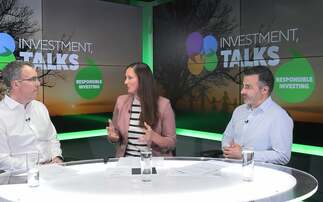
Companies with exciting growth stories can lure investors, while those that receive little fanfare can deter them
Value investing is predicated on selecting stocks that appear to be trading at a discount to their intrinsic value and avoiding those that seem to be trading at a premium. The general idea behind this is that markets overreact to good and bad news in the short run, leading to stock price moves that don't reflect the long-term fundamentals of companies.
"The value premium is attributed to rational decisions or behavioural biases that cause ‘irrational' reactions"
But pinpointing what actually drives the value premium is a contentious issue among academics and practitioners. One argument is that it is compensation for some type of risk, such as distress or macroeconomic risk. Another is that the value premium is attributed to rational decisions or behavioural biases that cause ‘irrational' reactions.
Figure 1 | Relationship between excess return and distress risk
Source: The chart uses monthly EUR returns from Jan 1986 to Dec 2014 for developed markets of the largest 3,000 stocks of all Broad Market Index constituents, ranked by Robeco's distance-to-default factor, assuming a one-month holding period and ignoring transaction costs.
In recent times, Value has been one of the most contested styles in the investing fraternity. Its present-day validity is the subject matter of many debates, often leading to polarised viewpoints and colourful metaphors such as death, winter and resurrection1. This is in stark contrast to the popularity it enjoyed for most of the 20th century, when many investors followed in the footsteps of Benjamin Graham and Warren Buffett. While Value has experienced performance headwinds in the last decade or so, the factor has delivered market-beating returns over the long run and in most decades since the 1930s.
In this article, we delve into the driving factors behind the Value premium from both a risk and behavioural perspective, review the evolution of the style, and outline the reasons why we believe the Value factor will continue to persist over the long term.
1 For extensive analyses on recent value performance, please see: Arnott, R. D., Harvey, C. R., Kalesnik, V., and Linnainmaa, J. T., January 2021, "Reports of value's death may be greatly exaggerated", Financial Analysts Journal; Van Vliet, P., and Baltussen, G., August 2020, "Will value survive its long winter?", Robeco article; and Blitz, D., Hanauer, M. X., January 2021, "Resurrecting the Value Premium", Journal of Portfolio Management.
This post is funded by Robeco.






